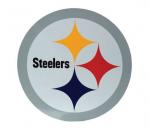Using a microscope to get a closer look at the world around you has never been easier — especially when you have your phone to help. There are quite a few clip- and stick-on lenses that turn your smartphone’s camera into a basic microscope, and they all let you make any number of small but surprising discoveries about the world around you. Like the fact that freshly cut hair can look like brittle strands of uncooked spaghetti when viewed up close, or that the surface of a dried black peppercorn is meteoric in its detail; full of tiny ridges and craters.
The phone-microscope kit I’ve been playing around with lately is called Blips. I backed it on Kickstarter earlier this year, and it’s now available for anyone to pre-order. For $30 you get a pair of plastic lenses — one micro and one macro — in a matchbook-like bit of packaging, and, uh, that’s it. More expensive Blips kits include a stand and light source to better illuminate your subject, but if you’re a newcomer to this sort of home microscopy, the basic version will do you just fine.
Previous SlideNext Slide
1/3 SLIDES © Provided by The Verge
Blips is pretty great, but isn’t without its difficulties. The fact that it just sticks onto your phone with tape makes it ridiculously easy to set up, but also gives it a limited shelf life. For me, the tape lost its stickiness after about three weeks, and I lost the micro lens one day just taking my phone out of my pocket. You might, of course, be more careful than I was, but losing your purchase is a definite downside — especially when compared to more permanent clip-on lenses.
You’ll need a steady hand and a good light source to take half-decent images
The depth of field is also pretty horrendous, making it difficult to get in-focus shots. You’ll need patience and a steady hand, as well as bright sunlight or a nearby lamp. Without a light source positioned directly below or on the side, your phone’s shadow tends to occlude whatever it is you’re trying to photograph. And as an aside, I personally found that the Blips macro lens was much trickier to use than the micro lens — requiring you get closer to the subject, and keep an even steadier hand. All for only marginally more impressive results.
These caveats aside, this really is one of the most convenient and fun ways to play around with a microscope. It’s in your pocket for a start, so you can take it with you wherever you go; use it to examine some sugar granules in the café, or the texture of a sculpture in the museum. And while these images aren’t going to be award-winning, they will give you a new sense of your surroundings. You’ll start thinking microscopically; imagining textures and structures you never would have previously thought about — making discoveries in the world at your fingertips.
Torrent Invites! Buy, Trade, Sell Or Find Free Invites, For EVERY Private Tracker! HDBits.org, BTN, PTP, MTV, Empornium, Orpheus, Bibliotik, RED, IPT, TL, PHD etc!
Results 1 to 1 of 1
-
11-28-2016 #1Donor





















- Reputation Points
- 37911
- Reputation Power
- 100
- Join Date
- Aug 2014
- Posts
- 2,655
- Time Online
- 39 d 23 h 33 m
- Avg. Time Online
- 16 m
- Mentioned
- 393 Post(s)
- Quoted
- 106 Post(s)
- Liked
- 1390 times
- Feedbacks
- 114 (100%)
This is the best way to put a microscope in your pocket


 1Likes
1Likes LinkBack URL
LinkBack URL About LinkBacks
About LinkBacks





 Reply With Quote
Reply With Quote





